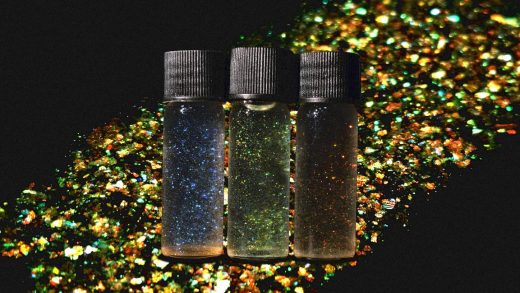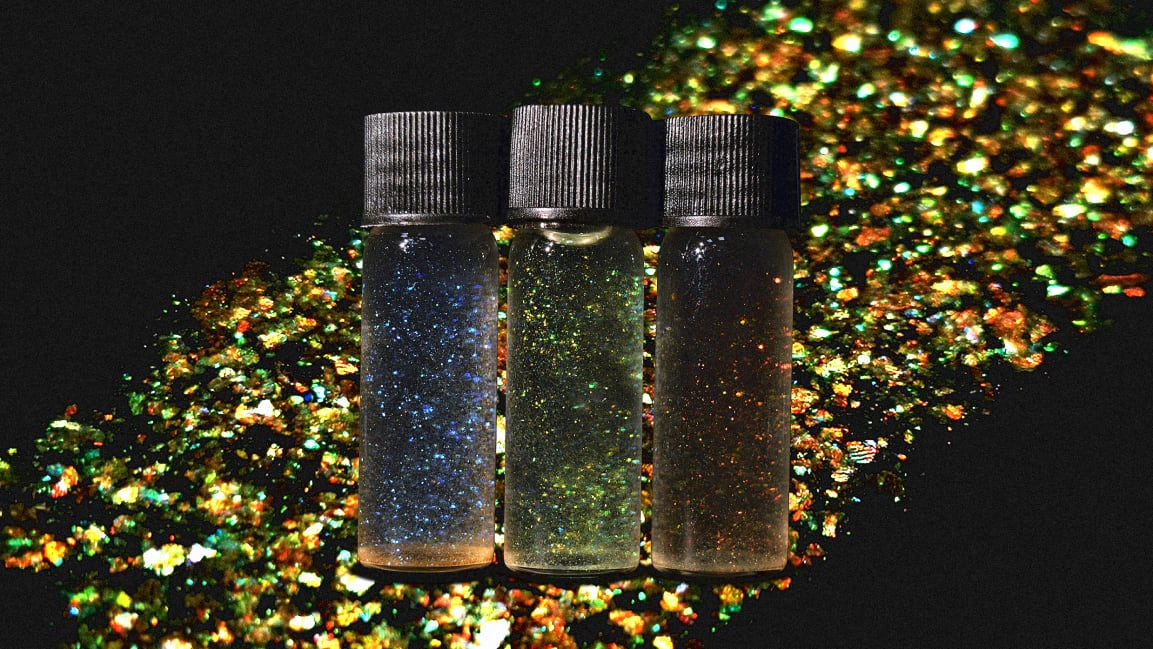This new biodegradable glitter is made entirely from plants
Anyone who’s swiped on a sparkly eyeshadow or used glitter for arts and crafts knows that those tiny, shimmering pieces are hard to clean up—in more ways than one. Glitter gets everywhere, and since most glitter is made of plastic, it doesn’t disappear. But scientists say they’ve now made a glitter completely out of plants that can actually biodegrade, without compromising any sparkle.
Though small, glitter can be a big environmental problem. When glitter is added to cosmetics, it often ends up getting washed off, and the microplastic pieces make their way into rivers and oceans. So-called sustainable glitters haven’t been much better. While some plant-based glitters do already exist, they’re usually wrapped in materials like aluminum or plastic polymer film in order to give them their shimmer, coatings that don’t biodegrade; or, they need perfect composting conditions to disappear.
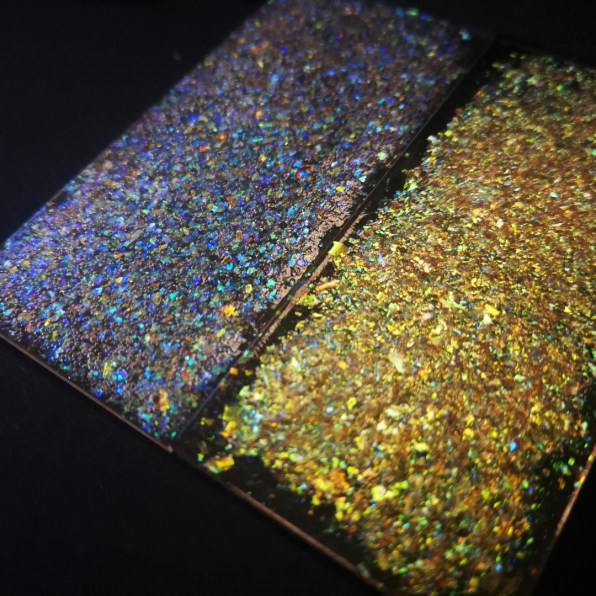
Mica and titanium dioxide, minerals used in “natural glitters,” have their own issues: mining the former is a practice fraught with child labor; the latter has been banned in the European Union because of its potentially toxic, carcinogenic effects, especially if digested.
Researchers at the University of Cambridge say their cellulose-based glitter solves all these problems, for a safer, sustainable sparkle. The first pieces of this glitter were made from wood-pulp, which the researchers detail in the journal Nature Materials, but any plant product with easily extractable cellulose could be used, like cotton or even a “waste product” such as mango peels, banana peels, or coffee bean skins, says Silvia Vignolini, a chemistry professor at the university and senior author of a paper. (And since it’s only made from cellulose, it can also be safely eaten, the researchers say.)
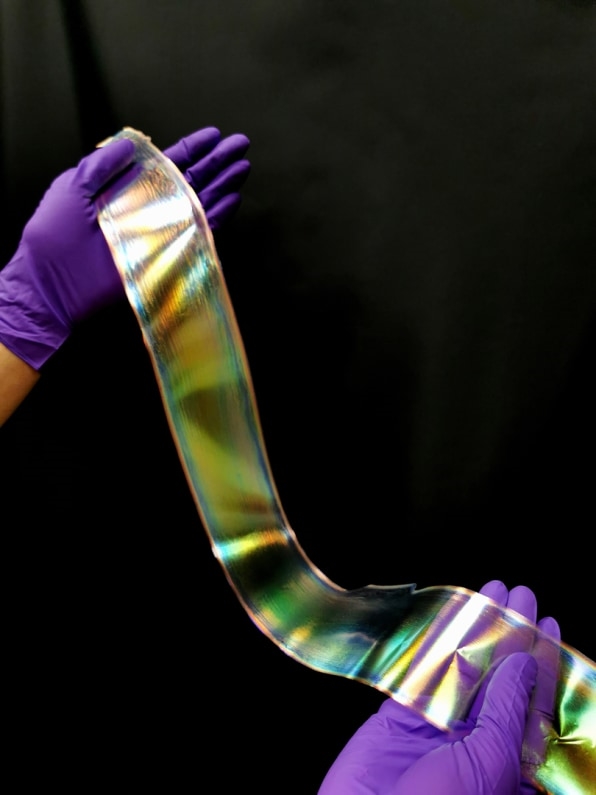
To get their cellulose glitter to give off that iconic, multicolored twinkle, they didn’t add any plastic coatings or aluminum layers. Instead, they used a process called “structural coloration,” in which microscopic structural surfaces bend light waves in such a way that they produce pigments. Structural colors can be seen in nature, like on an iridescent peacock feather or the metallic-looking blue of marble berries.
“The cellulose nanocrystals are organized in such a way that they can make color,” says Benjamin Droguet, also from the school’s chemistry department and first author of the paper. The nanocrystals form a helicoidal structure, meaning the layers rotate as if arranged in a spiral. Think of it as a staircase, he says. “The way to control the color is by simply changing the size of those helicoids, so we can imagine a staircase with levels that are different distances from each other. The larger the features, the longer the wavelengths of light that will be reflected,” which then changes the colors that we see.
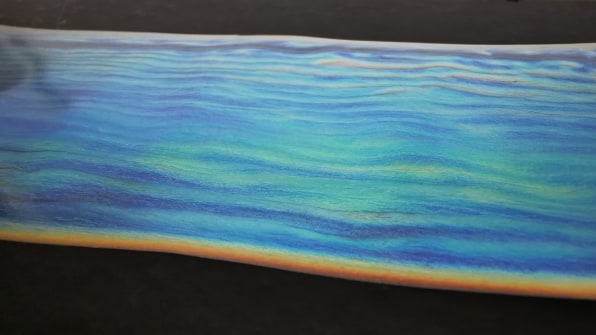
The cellulose particles they used from wood pulp spontaneously form these structures through a process called self-assembly: the cellulose crystals align, and then twist. But to actually turn this into glitter, the researchers had to create large-scale cellulose films, and they did that by packing cellulose into water, As the water evaporates, it forces the materials to contract, which prompts that self-assembly into those spiraling, light-reflecting colors. They could then grind that film of colorful cellulose down into tiny particles of glitter. Because the only ingredient is plants, no matter what happens to the glitter, it will eventually biodegrade.
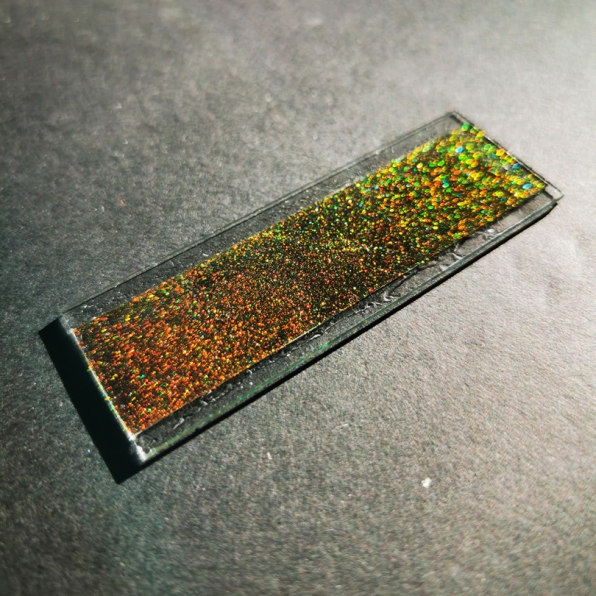
With this method, the researchers don’t need to add anything to the cellulose to create shimmering colors. “Cellulose by itself is a transparent material,” Vignolini says. It’s when you organize and structure it on this kind of scale that it can provide color. “Think about a soap bubble,” she says. “Water is transparent, but as soon as you create that soap bubble layer, then you start to see colors.” The researchers’ main goal, she adds, is to find a more sustainable solution for pigment in general. The way we make any artificial colors often requires a chemical-heavy, energy-heavy process.
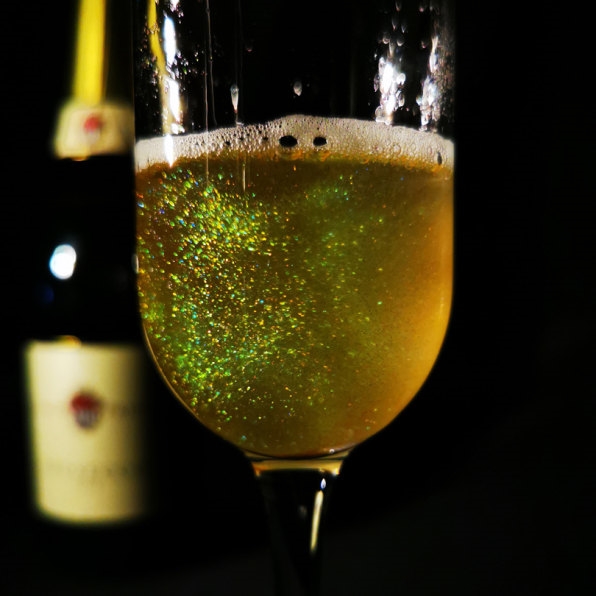
Using these all-cellulose pigments and glitters could be revolutionary for the cosmetics industry in particular. In Europe, the cosmetics industry uses about 5,000 tonnes of microplastics every year. The Nature Materials paper proves that this biodegradable, cellulose glitter can be produced on industrial machines, via those rolls of cellulose films. The next step is to scale the production up to even larger equipment and commercialize their pigments and glitters in the coming years. “Right now, with glitter, people don’t necessarily think about it as having a big impact on the environment,” Droguet says “but the fact is, those shiny particles are used everywhere.” Eventually these biodegradable cellulose ones may be everywhere—at least temporarily—instead.
Almost all of the glitter you’ve ever used is still floating around the planet. This new formulation has just one ingredient, but it’s still as shimmery as the original.
Anyone who’s swiped on a sparkly eyeshadow or used glitter for arts and crafts knows that those tiny, shimmering pieces are hard to clean up—in more ways than one. Glitter gets everywhere, and since most glitter is made of plastic, it doesn’t disappear. But scientists say they’ve now made a glitter completely out of plants that can actually biodegrade, without compromising any sparkle.
Read Full Story , Fast Company
(44)

